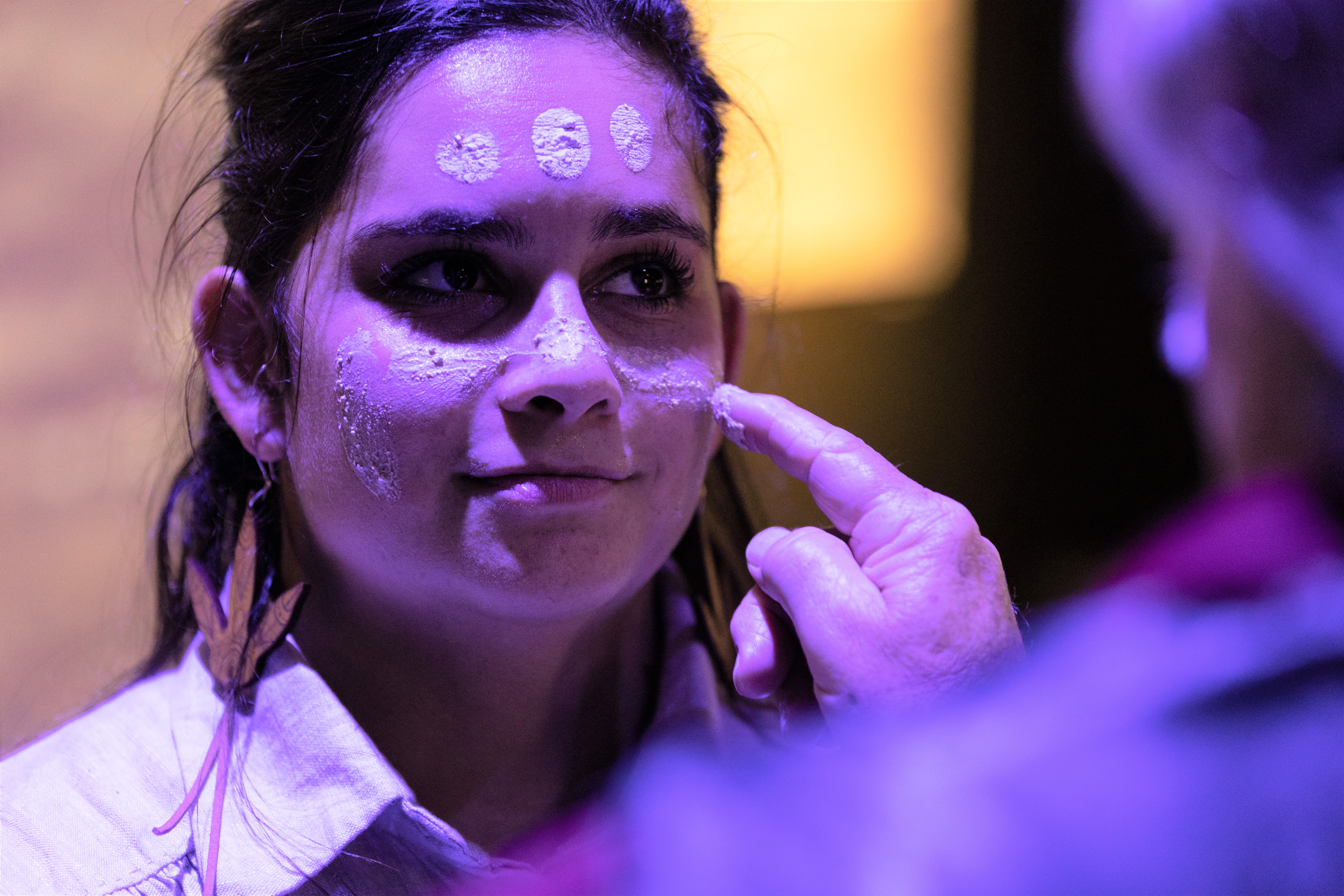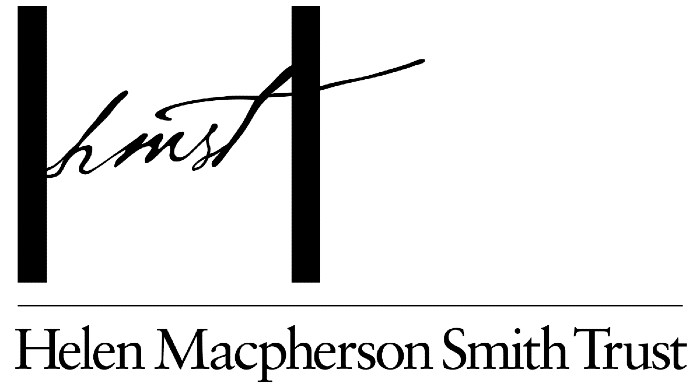Meet Ngioka Bunda-Heath: 2022 Hutchinson Fellow

Ngioka Bunda-Heath is a Wakka Wakka, Ngugi and Birrpai dancer and storyteller whose choreographic works are a deep excavation of her cultural and ancestral histories. She is also a woman of many firsts: the first Aboriginal woman to graduate from the dance program at the VCA, and now, the first choreographer and dancer to receive the prestigious Hutchinson Indigenous Fellowship and Residency at the University of Melbourne.
As the 2022 Hutchinson Fellow, Ngioka will undertake a one-year residency at VCA Dance. We spoke with her about her choreographic practice and plans for the year ahead.
Hi Ngioka, how does it feel to return to the VCA as the Hutchinson Fellow?
It feels amazing! I’m so grateful for this opportunity and can’t wait to return.
What can you tell us about your plans for the residency?
During the residency, I’d like to spend as much time as I can with the students as both a choreographer and teacher. I want to use this time to pass on the legacy of my First Nations elders and mentors and forge new pathways for the next generation of Indigenous dancers at the VCA. I was the first Aboriginal woman to graduate from VCA Dance, and I certainly don’t want to be the last.
You are deeply involved with the youth dance movement. What do you find most rewarding about working with younger dancers?
My first gig out of university was with Bangarra, supporting their youth outreach program, Rekindling. I spent six months teaching dance to students in communities and really enjoyed it, I have continued this type of work throughout my career.
I’ve got such a passion for dance, and that has made me a bit of a sponge during my career. I’ve trained in contemporary dance, hip-hop and commercial dance styles and love sharing this knowledge with younger dancers.

What is your advice to younger dancers?
I know it’s a cliché, but just don’t give up.
Has this advice served you in your career?
Yes, throughout my career I’ve had hits and misses. I didn’t always succeed at first, but kept going, which led to other opportunities.
My original aspiration was to be a soloist with Bangarra. I didn’t land that job, but instead landed the role supporting the Rekindling program, which I loved.
I landed my current role as First Peoples Partnership Coordinator at Chunky Move in a similar way. I had originally auditioned for the company as a dancer, and when I didn’t get the role, Chunky Move offered to co-commission my work Birrpai (2021) as part of their Activators commissioning program, which then led to the First Peoples Partnership role.
In addition to your work as a dancer, you are also a storyteller and choreographer. Did you always plan to make your own work?
Not really, I was so nervous when I made my first work for a major festival. I remember thinking, I’m either going to sink, or swim.

Can you tell us about your first full-length work?
I made my first work Blood Quantum in 2019 for the Yirramboi Festival. The work was inspired by the story of my grandmother.
My mum always dreamed that I would dance my grandmother’s story on stage, so when I received a commission to make the work for Yirramboi, I knew the time had come.
My mum is an academic and gave me her PhD to turn into the work. She was so generous in sharing her writings, which speak of my grandmother’s memories as a child of the stolen generation. My grandmother was the matriarch of our family and I really wanted to honour her with my first work.
What made Blood Quantum so special was that I got to perform the show with my mum.
How did you end up sharing the stage with your mum and what was that experience like?
During the development of the work, I just knew I couldn’t tell my grandmother’s story on stage without sharing the stage with mum. So, I invited her to read my grandmother’s story on stage while I danced it. We performed the entire season together. The experience was beautiful, healing and a girl-power moment in my life – I’ll never forget it.

What did your dad think of Blood Quantum?
Dad loved it. He is also an academic, so when he saw the show, he made the point of saying he had a PhD too. I knew then, that I had another work to make and another PhD to read.
My dad’s PhD was the inspiration for my second major work, Birrpai (2021).
Can you tell us about your dad’s PhD and how it informed Birrpai?
In his thesis, he writes of my paternal great-grandmother who appeared in staged/re-enacted photos that depicted Aboriginal people pre Cook’s arrival. The photos were taken by a British settler, 100 years or so after Cook's arrival. In one of the photos, the photographer etched Cook’s ship, The Endeavour, into the image's background with my great-grandmother posed as if she were witnessing the ship coming to shore.
I spent time with my dad on Birrpai country, where the photographs were taken to learn more about the history of the images. I discovered that they sit within the cultural collections of several museums, here and overseas. The photos in these collections are labelled as genuine, even though they’re only re-enactments. I found the whole story fascinating, and the images problematic, and it was that response that laid the basis for my choreographic explorations in the work.

What was it like growing up with academics for parents?
As a kid, it had its perks. I’ve always been more physically embodied, while mum and dad were into research and academia. I loved that I could always lean on them for support with my homework, and I still tap into their expertise every now and then for help with my grant writing.
They also played a huge role in why I ended up studying dance at the VCA. In my final year of high school, my mother said that she didn’t care what I studied as long as I went to university. So, when I found out I could study dance at uni, I was like, yes!
Storytelling, video, and projection are vital elements in your work. What draws you to work in this interdisciplinary way?
The use of video, photography and projection in my work is a deliberate choice. In Aboriginal culture, we believe that the image of the person brings them forth and into the space with you. The use of these mediums allows me to share the stage with my ancestors while I tell their stories.
I also tell hard-hitting, emotional, and traumatic stories on stage, and I find that working with these mediums helps me express them in a way that is digestible for an audience.
What is the best thing about being a dancer and choreographer?
Telling important stories and expressing yourself on stage through movement. There is really nothing like it.
What is your most memorable on-stage moment?
I’ve been so blessed to perform on stages of all sizes. I’ve performed in front of thousands at the Footy World Cup and in front of my brothers in the loungeroom. I’ve loved all these performances equally. If I had to choose one though, it would be performing on stage with my parents – this is something I’ll always cherish.
- Find out more about Ngioka and the Hutchinson Indigenous Fellowship
- Find out more about studying dance at the University of Melbourne
About Ngioka Bunda-Heath: Ngioka is Wakka Wakka, Ngugi from Queensland (matrilineal); and Birrpai from New South Wales (patrilineal). She completed her Bachelor of Fine Arts (Dance) at the Victorian College of the Arts and is the first Aboriginal woman to graduate in her field. She has worked for Bangarra Dance Theatre in their “Rekindling” youth education program; and is First Peoples Partnership Coordinator at Chunky Move. Ngioka has performed in several works nationally, working with esteemed choreographers such as Mariaa Randall, Amrita Hepi, Sarah Aiken and Rebecca Jensen. Internationally, she’s participated in dance conferences, festivals and residencies in New Caledonia, France, Canada and the USA. Ngioka’s choreographic work includes Blood Quantum (2019), Birrpai (2020) and Lucha Bridge, Silent Shift (2021).
About the Hutchinson Indigenous Fellowship: This annual award provides a Victorian Aboriginal emerging artist with financial support to explore ideas and develop skills that will realise new iterations of cultural practice and development and build their practice into the future. It is a major Fellowship established by the Helen Macpherson Smith Trust in celebration of Mr Darvell Martin Hutchinson AM, the long-serving Chair of the Helen Macpherson Smith Trust for 50 years.
